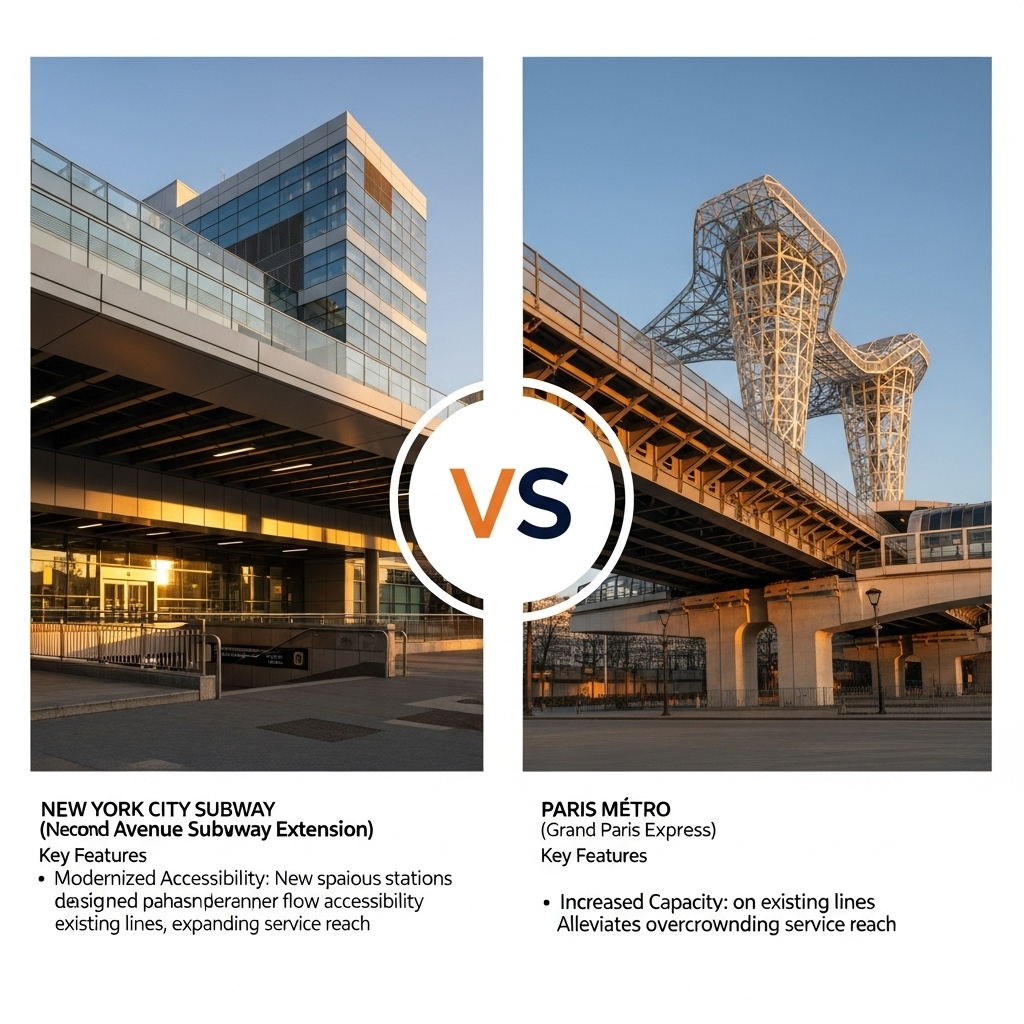Public transit systems: New York City Subway (Second Avenue Subway Extension) vs. Paris Métro (Grand Paris Express)
Quick Verdict
The Grand Paris Express is a much larger and more ambitious project than the Second Avenue Subway extension, with a higher projected ridership and more extensive network expansion.
- Grand Paris Express has a significantly larger scale in terms of ridership and number of stations.
- Both projects aim to improve commute times and integrate with existing transit networks.
- Both projects have community engagement and environmental considerations.

Key features – Side-by-Side
| Attribute | New York City Subway (Second Avenue Subway Extension) | Paris Métro (Grand Paris Express) |
|---|---|---|
| Projected Ridership (daily) | 110,000 (Phase 2 alone), 300,000 (Phases 1 & 2) | 3,000,000 |
| Construction Cost (total) | $6.99 billion (Phase 2 budget), nearly $7.7 billion (including financing) | Approximately $47.7 billion |
| Number of New Stations | 3 | 68 |
| Service Frequency (peak) | Every 3 minutes | Every 2-3 minutes (on some lines) |
| Accessibility Features | ADA-accessible stations | 100% accessible |
| Project Completion Timeline | September 2032 | Around 2030 |
Overall Comparison
Ridership: Paris wins; Cost: Paris higher; Stations: Paris wins; Completion: Similar timelines
Pros and Cons
New York City Subway (Second Avenue Subway Extension)
Pros:
- Reduces crowding on the Lexington Avenue Line
- Improved air quality
- Shorter commute times for some passengers
- ADA-accessible stations
- Direct connection to Lexington Avenue line and Metro-North Railroad
- Community input in planning and design
- Local hiring target for East Harlem residents
Cons:
- No major disadvantages reported.
Paris Métro (Grand Paris Express)
Pros:
- Improved accessibility with 100% accessible stations and trains
- Significant reduction in commute times
- Extensive integration with existing transit network
- Environmentally friendly design with reduced carbon emissions
- Technological innovations such as driverless trains
Cons:
- Project delays
- Cost escalations
User Experiences and Feedback
New York City Subway (Second Avenue Subway Extension)
What Users Love
- No highlights reported.
Common Complaints
- No major complaints reported.
Value Perception
- No value feedback reported.
Paris Métro (Grand Paris Express)
What Users Love
- No highlights reported.
Common Complaints
- No major complaints reported.
Value Perception
- No value feedback reported.